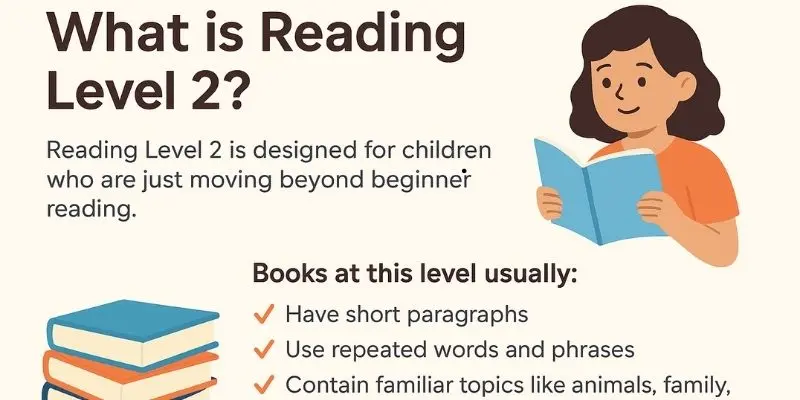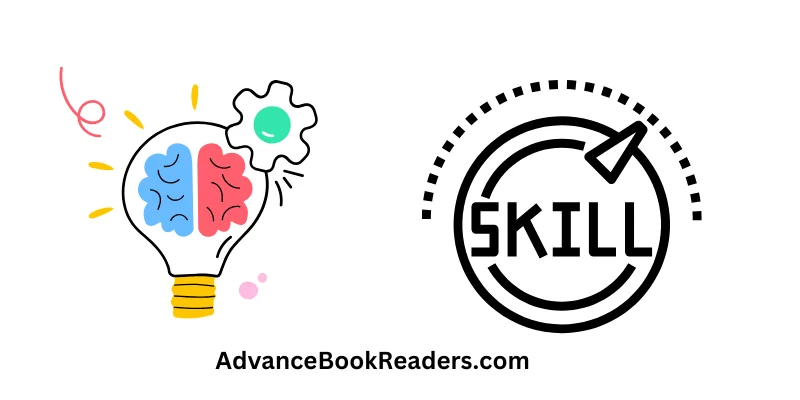All About Reading Level 2: Age, Grade, Skills & Book List
Updated: 08 Aug 2025
3
Have you ever stood in a bookstore or scrolled online and wondered, “What exactly does Reading Level 2 mean?” You’re not alone. For many parents and teachers, reading levels feel like a secret code—full of numbers, grades, and systems that don’t always match up. Yet, understanding these levels is so important.
They help you choose books that are not too hard, not too easy, but just right for a child’s growing skills.
Reading Level 2 is often the first big step where kids move from sounding out single words to reading short stories with confidence. At this stage, books start to have fewer pictures, more sentences, and a simple flow that makes young readers feel proud of finishing a book on their own.
But here’s the tricky part—every child learns differently, and many parents wonder if their child is really ready for Level 2.
In this blog, we’ll break down everything you need to know about Reading Level 2: the age and grade it fits, the skills kids need, examples of books, and even tips to help them move forward.
What is Reading Level 2?
Reading Level 2 is designed for children who are just moving beyond beginner reading. At this stage, kids can do more than recognize single words—they are ready to enjoy short stories with simple sentences and basic vocabulary.

Books at this level usually:
- Have short paragraphs instead of single lines.
- Use repeated words and phrases to build confidence.
- Contain familiar topics like animals, family, school, and fun adventures.
- Still include pictures, but not on every page.
Think of Reading Level 2 as a bridge. It helps children move from very simple picture books to more structured stories, preparing them for higher levels of reading.
What Age and Grade is Reading Level 2 For?
Reading Level 2 books are usually written for:

- Ages: 6 to 8 years old
- Grades: First grade to early second grade
But remember—these ages are only a guideline. Some children may reach Level 2 earlier, while others may take a little longer. Both are completely normal.
Why Age Isn’t Everything
- Kids develop reading skills at different speeds.
- Interest matters—if a child loves a topic, they may read harder books sooner.
- Confidence is key—choosing the right level avoids frustration.
So instead of focusing only on age or grade, pay attention to your child’s comfort and enjoyment when reading. That’s the best way to know if Level 2 is right for them.
Key Skills of Reading Level 2 Readers
At Reading Level 2, children are starting to show real progress as independent readers. They can handle more than single words or short sentences—they’re beginning to enjoy small stories with meaning.

Common Skills at This Stage
A child reading at Level 2 is usually able to:
- Recognize common sight words quickly (like the, and, said).
- Read short paragraphs instead of only one sentence per page.
- Use phonics and decoding to figure out new words.
- Understand the main idea of a story.
- Answer simple comprehension questions (Who? What? Where?).
- Start reading with expression and fluency.
These skills show that your child is moving beyond sounding out words and beginning to understand stories. That’s a big step toward becoming a confident reader.
Reading Level 2 vs Level 1 and Level 3
Parents often wonder: “How is Level 2 different from Level 1 or Level 3?” The answer lies in the length of the text, vocabulary, and use of pictures.

Level 1: Very Beginning Readers
- Mostly single sentences on each page.
- Lots of pictures to guide understanding.
- Focus on the simplest sight words.
Level 2: Developing Readers
- Short paragraphs with 2–3 sentences.
- Fewer pictures, but still some support.
- Slightly longer stories with simple plots.
Level 3: Transition Readers
- Longer stories with more text per page.
- Minimal pictures or sometimes none at all.
- More complex vocabulary and ideas.
- Early chapter book style.
👉 You can think of Level 2 as the middle step—it’s where children move from “just beginning” to “reading with more confidence.”
How Reading Level 2 Connects with Other Systems
One reason parents get confused is that there are different systems for measuring reading levels. The good news is that Reading Level 2 roughly matches up with several of these systems, so you can compare them more easily.
Common Reading Systems and Level 2
- Lexile Range: About 200L–400L
- Guided Reading Level (GRL): Around H–J
- AR (Accelerated Reader): Early 1st to 2nd grade books
- Scholastic/I Can Read Levels: Usually labeled as Level 2 Readers
📌 Why this matters:
If your school or library uses a different leveling system, knowing these ranges helps you find the right books for your child. It also ensures you’re not choosing books that are too hard—or too easy.
Examples of Reading Level 2 Books
Now comes the fun part—choosing books your child will actually enjoy! Reading Level 2 books are designed to keep kids engaged with short, simple stories while building their skills.
Popular Reading Level 2 Series
- I Can Read! Level 2 (Henry and Mudge, Amelia Bedelia, Frog and Toad)
- Step Into Reading – Step 2 (Danny and the Dinosaur, Fox on a Box)
- Scholastic Level 2 Readers (Clifford the Big Red Dog, Magic School Bus early readers)
Why These Work
- They use simple language children can read on their own.
- They often include humor, adventure, or familiar situations.
- The stories are short enough to build confidence while still feeling like a “real book.”
👉 A mix of fiction and non-fiction at Level 2 is a great way to keep kids excited and curious about reading.
How to Choose the Right Level 2 Book for Your Child
Not all Level 2 books are the same, so picking the right one can make a big difference. A good book should be challenging enough to teach new words but still fun and easy enough to enjoy.
Tips for Choosing the Right Book
- Follow your child’s interests – Kids read more when books match what they love (animals, adventure, funny stories).
- Check the length – Look for short paragraphs with some pictures for support.
- Use the “Five Finger Rule” – If your child struggles with more than five words on one page, the book may be too hard.
- Mix it up – Try both fiction and non-fiction to build different skills.
📌 The goal is not just reading practice—it’s about building confidence and excitement for books.
Tips to Help Kids Progress Beyond Level 2
Once your child feels comfortable with Level 2, you can help them grow into even stronger readers. The key is to keep reading fun and consistent.
Ways to Support Reading Growth
- Read every day – Even 10–15 minutes makes a big difference.
- Take turns reading – Share a story by reading one page each.
- Ask simple questions – “What happened first?” or “What do you think will happen next?”
- Encourage expression – Let your child read with excitement, not just word by word.
- Introduce early chapter books – When they’re ready, try short chapter books with fewer pictures.
💡 Remember: every child moves at their own pace. The goal is steady progress, not rushing to the next level.
Conclusion
Reading Level 2 is an exciting milestone in a child’s journey as a reader. At this stage, kids are moving from sounding out simple words to reading short stories with confidence and joy. It’s where books start to feel more like “real stories,” and children begin to see themselves as independent readers.
For parents and teachers, understanding Level 2 helps in choosing books that are a perfect fit—not too easy, not too hard. More importantly, it takes away the confusion of different leveling systems and gives you the clarity to support your child in the right way.
But remember, reading is not a race. Some kids may reach this level sooner, while others may take a little longer, and that’s completely normal. What matters most is keeping the experience fun, encouraging curiosity, and celebrating every small step of progress.
So whether it’s Henry and Mudge, Frog and Toad, or a silly story that makes your child laugh, the right Level 2 book can spark a love for reading that lasts a lifetime. Keep exploring, keep reading, and enjoy the journey together!
FAQ: All About Reading Level 2
1. What is Reading Level 2?
Reading Level 2 is for early readers who can read short paragraphs, recognize sight words, and begin to understand simple stories.
2. What age is Reading Level 2 for?
It’s usually for children between 6–8 years old, which is around first to early second grade.It’s usually for children between 6–8 years old, which is around first to early second grade.
3. What skills should a Level 2 reader have?
They should be able to read short stories with fluency, understand basic comprehension questions, and use phonics to sound out new words.
4. Can Reading Level 2 books be both fiction and non-fiction?
Yes! Level 2 includes both storybooks and simple fact books, so children can enjoy a mix of learning and fun.
5. How do I know if my child is ready for Level 2?
If your child can easily read simple sentences, recognize common sight words, and shows interest in slightly longer stories, they’re ready for Level 2 books.
Please Write Your Comments